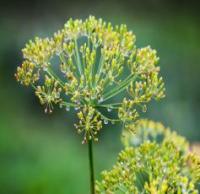Botanical Family: Apiaceae or Umbelliferae (parsley)
Plant Origin: Austria, Hungary
Extraction Method: Steam distilled from whole plant
Key Constituents: Carvone (30-45%), Limonene (15-25%), Alpha- and Beta-Phellandenes (20-35%).
ORAC: 35,600 µTE/100g
Historical Data: The dill plant is mentioned in the Papyrus of Ebers from Egypt (1550 B.C.). Roman gladiators rubbed their skin with dill before each match. Listed in Dioscorides’ de Materia Medica (A.D.78), Europe’s first authoritive guide to medicines, which became the standard reference work for herbal treatments for over 1,700 years. It was listed in Hildegard’s Medicine, a compilation of early German medicine by highly regarded Benedictine herbalist Hildegard of Bingen (1098-1179)
Medical Properties: Antidiabetic, antispasmodic, antibacterial, expectorant, pancreatic stimulant, insulin/blood sugar regulator
USES: It can be used for diabetes, digestive problems, liver deficiencies.
Fragrant Influence: Calm the autonomic nervous system and, when diffused with Roman chamomile, combats ADHD.
Application: It is recommended to dilute 1 part of essential oil with 1 part V-6 Vegetable Oil Complex or other pure vegetable oil; (1) apply 2-4 drops on location or abdomen, (2) apply on chakras and/or Vita Flex points (3) inhale directly, (4) diffuse, or (5) take as dietary supplement.
|
|

